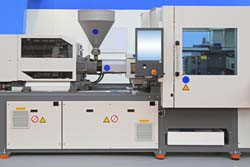Composite moulds for composite products
Various types of moulding processes are commonly used to produce plastic and composite parts. The moulds have conventionally been made of metal. Composite moulds are gaining ground, but primarily in manufacturing processes with relatively mild conditions. In order to increase the temperature capabilities of the composite moulds so as to tap new markets, important advances in mould technology are required. A large European consortium launched the EU-funded COEUS-TITAN(opens in new window) (Innovative smart composite moulds for cost-effective manufacturing of plastic and composite components) project to develop needed technology. For heating the mould and its contents, scientists embedded conductive carbon fibres close to the surface of the mould among a number of nano-doped layers having high thermal conductivity. This ensures maximum heat transfer to the resin to reduce energy consumption. The team also developed flow, temperature and cure sensors to enable fully automated process control in combination with analysis tools for process parameter optimisation. A novel cooling system consisted of a network of channels that followed the contour of the part. Heat transfer fluid circulated through the channels to absorb heat from the system. Two different piezoelectric actuators were evaluated for their ability to enhance resin flow based on electrically induced micro-vibrations. Finally, a new metallic coating based on nanofillers and mineral fillers improved chemical resistance to the resins and facilitated repair in case of damage. The final tooling integrated all developed technologies and tested them in an experimental infusion protocol. Further optimisation is expected to lead to a breakthrough in smart composite mould design and extension of moulding capabilities. Manufacturers will be able to use the cost-effective mould technology in the demanding environment of resin transfer moulding. This technique is increasingly used to produce smooth components with large surface areas and complex shapes such as those required by the aerospace sector. It will also enable the use of advanced resins that require higher temperatures in conventional moulding processes. Overall, commercialisation of the smart composite mould should significantly increase the competitive edge of EU plastics and composites manufacturers.







